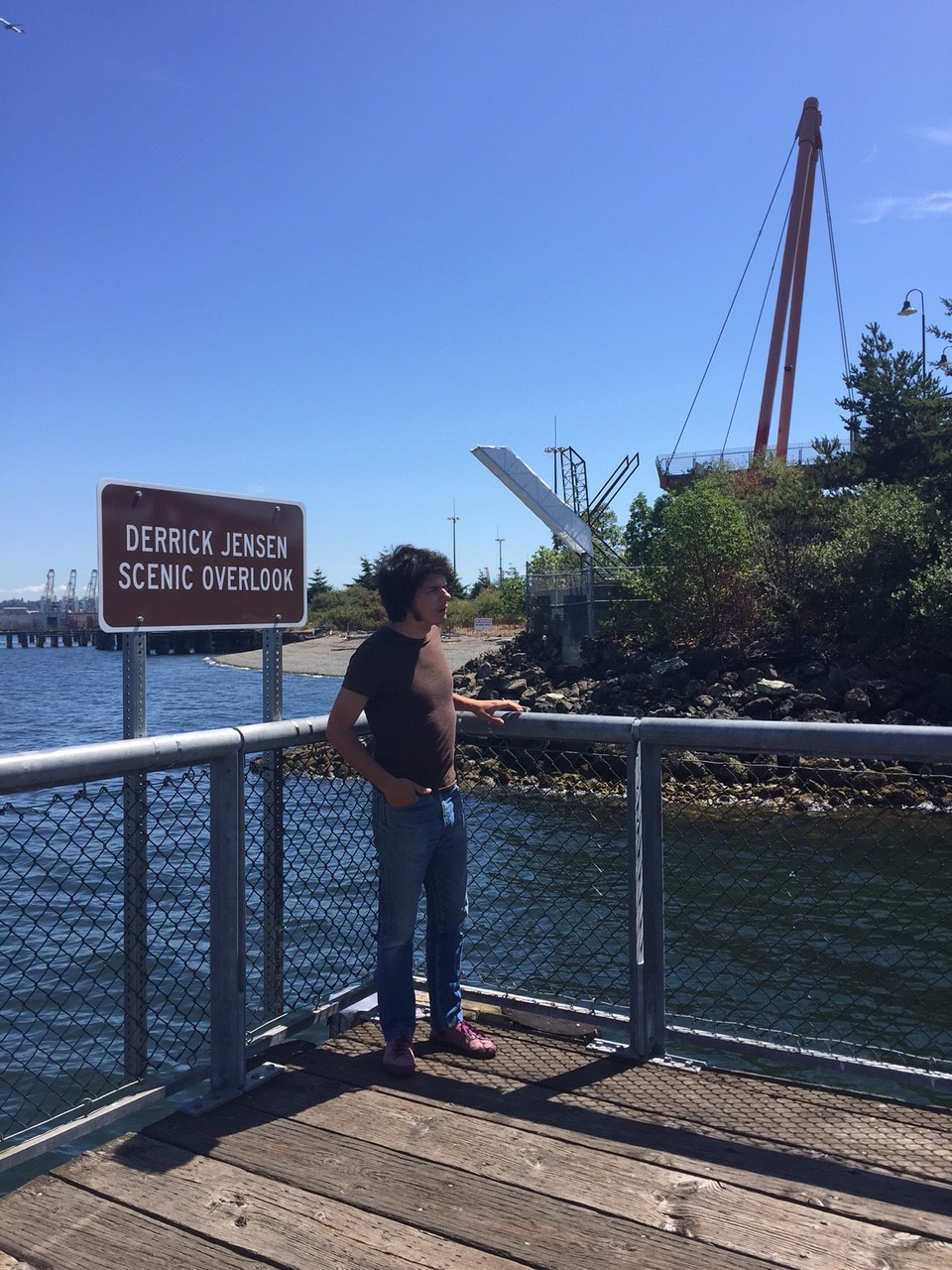The Duwamish Lighthouse: Interview with George Lee
Giant metal containers, filled with anonymous contents, and enormous looming mechanical cranes greet you as you visit the Duwamish River. Barges float by, their massive loads heaving upstream beside a group of lazy seals and squawking birds, soaking up the sun. This is Seattle’s river—a place of rich and tumultuous history, of wild nature and industrial economy. It glows with cultural significance and life, and yet, is a Superfund site with sediment so toxic that it’s dangerous to eat the resident fish. Though the river appears, to many of Seattle’s inhabitants, to be used solely for shipping and industry, a summer long arts festival called Duwamish Revealed invites you to take a closer look at the many other happenings along Seattle’s only river. Duwamish Revealed is a series of site-specific art installations and performances to celebrate the river’s beautiful and troubling history, and familiarize an audience with its captivating present. One of the participating artists, and a presenter at the most recent WASLA conference, is George Lee. A public artist and landscape architect from Seattle, Lee has created a sculpture piece with the ability to build a relationship between humans and landscape by communicating the health of the river into a beacon of light visible within Elliott Bay.
Lee’s sculpture, the Duwamish Lighthouse, is located in Jack Block Park in West Seattle near the mouth of the river. At night, it lights up and “breathes.” It has two breathing patterns—calm or erratic—which are modeled on human breathing and based on real data collected from the river by USGS, City of Seattle, King County, and mobile water quality sensor kits created specifically for the Duwamish Lighthouse by Lee and a team of programmers\makers. This data is cross-referenced to state-set water quality thresholds for the Duwamish River, and determines which mode the breathing is in: unhealthy and sporadic, or healthy and relaxed. The sculpture’s rigid and radiating form, inspired by the industrial cranes along the river, is one of control and efficiency that becomes free and takes flight. Sited between the Duwamish River and the city of Seattle, the lighthouse throws light as a beacon in an effort to build a relationship with those who could potentially have a positive impact on the river and the communities that reside along its edges.
As I talk to Lee, we hear a nearby sound installation coming from a distance. It sounds as though an invisible ship with a booming horn is approaching us, but the water is clear ahead. From Jack Block Park Overlook, above the sculpture, you can see the lighthouse perfectly, as well as the city skyline beyond and the West Seattle shoreline to the west. As we look out, Lee describes the process of locating a site for the installation, and how all of the art pieces have really stirred oxygen into the conversation about how people interact and access the river. “One of the most fun parts of the Duwamish Revealed art festival is how people have to find the art pieces and have to work their way through these sites,” he says, “and by doing so realize how cool and weird the Duwamish is… It’s an effective way to get people to discover a place.” He mentions that art can be part of the early phase to help vitalize a site, and how landscape architects can partner with artists and use art projects as a way to explore wayfinding and site-access issues. He continues to say that his sculpture has been a way for him to delve into social, health and environmental issues that he finds important to work on and because it is an interpretive piece and an experiment, it will be a way for others to have conversations about those issues as well. Hopefully, for the Duwamish River, the lighthouse will build relationships and start conversations with individuals that need to have those conversations most. The art installations and performances participating in the Duwamish Revealed festival offer ways for people to interact with the river, and provoke critical questions about what we can do to help. For landscape architects, it may be time to ask ourselves how we can start designing not just on land, but in our water. To learn more about the Duwamish Lighthouse, visit http://www.georgeleestudio.com/duwamishlighthouse or see it illuminated from 8pm-midnight. -Stephanie Stroud
|

 The Duwamish Lighthouse (right) in Jack Block Park is visible from downtown Seattle
The Duwamish Lighthouse (right) in Jack Block Park is visible from downtown Seattle George Lee and the Duwamish Lighthouse
George Lee and the Duwamish Lighthouse